Rotterdam (Netherlands South Holland)
Cruise Port schedule, live map, terminals, news
Region
Baltic - Norwegian Fjords - Russia
Local Time
2024-11-25 08:26
 59°F
59°F 14.8°C

 Fresh breeze
Fresh breeze8.9 m/s
 61 °F / 17 °C
61 °F / 17 °C 51 °F / 11 °C
Rotterdam cruise port is located around Wilhelmina Pier in Port Rotterdam - Europe's largest seaport. Rotterdam City is in the Netherlands South Holland province. By population (over 620,000/ metro around 1,2 million), the city is ranked the country's second-largest (following the capital Amsterdam). The distance to Amsterdam is approx 70 km (45 mi).
Rotterdam is a traditional homeport (turnaround/departure port) for HAL/Holland America Line. It is also often included on Transatlantic crossings between Europe and USA-Canada. Cruise vessels homeported in Rotterdam operate on itineraries themed as "Baltic Sea", "Scandinavia and Russia" and "Norwegian Fjords".
The first cruise liners docked at Port Rotterdam were HAL's steamships – SS Nieuw Amsterdam (1906-built), SS Statendam (1956), and SS Rotterdam (1959). HAL's Transatlantic voyages were from Rotterdam to NYC (New York USA).
Shore excursions from Rotterdam visit Delft, located approx 16 km/10 mi to the north-northwest (via highway A13). Delft is often part of cruisetour itineraries operated by riverboats. The boats dock in Rotterdam and transport their tourists to Delft via luxury buses. The excursion to Delft visits Royal Delft (De Koninklijke Porceleyne Fles NV/1653-founded factory with a museum and guided tours). The Royal Delft factory still produces the famous blue-and-white Delftware (aka Delfts blauw/Delft Blue) - tin-glazed pottery/ceramic products and objects including vases, plates, tiles, figurines, etc. Royal Delft is now the only remaining one (out of a total of 32 such factories established in the 17th century) and its production has never been interrupted - since 1653! Delft is also famous for being the homeport of VOC-Verenigde Oostindische Compagnie (Dutch East India Company/1602-1799) - the world's first joint-stock enterprise - a company with shares that can be bought/sold by the shareholders.
Port Rotterdam
Port Rotterdam (locode NLRTM) is Europe's largest cargo port, handling around 140,000 vessels and 460+ million cargo tons annually. For the period 1962-2004, it was the world's busiest port (today is the world's 3rd - following Singapore and Shanghai China). In 2012, the seaport was the world's 6th-largest cargo port. In 2018, Port Rotterdam handled 29476 international seagoing ships plus 107000 inland vessels (boats and barges). The port is well connected to major European cities via railways and roads.
The port has a total area of approx 105 km2 (41 mi2), stretching over approx 40 km (25 mi). The port also includes Rotterdam City's historic harbor. and Maasvlakte (reclaimed area projecting into North Sea). It consists of all 5 distinct port zones plus 3 distribution cargo parks. There are 8 deep-water terminals serving around 150,000 different shipping companies.
Port's most important industries are petrochemical (large oil refineries and storage facilities) and general cargo shipping. Rotterdam Harbor is an important transhipment point for bulk cargo and other goods transported between Europe and other continents (mainly China in Asia). From the port, goods are transported to mainland Europe by ships (North Sea), river barges (Maas and Rhine rivers), also trains and roads. In June 2007 was opened the Dutch part of Betuweroute - fast 2-track freight railway connecting Rotterdam with Germany. Germany's heaviest trains transport iron ore from Port Rotterdam to Dillingen (Germany) via Betuweroute.
Nieuwe Waterweg is a large river canal. This is an artificially made waterway designed to connect rivers Rhine and Meuse with North Sea. The canal was opened in 1872. In October 2017 was announced the Nieuwe Waterweg canal's deepening project (the dredging works started in 2018).
- The project involved a 1,5 m deepening along a 25-km (16 mi) long stretch between Hoek van Holland, Benelux Tunnel and port Botlek. The dredging encompassed 3 different depths - Botlek (from 14,5 to 16 m), Nieuwe Waterweg canal (Hoek van Holland to Maassluis, from 15 to 16 m) and Maassluis to Benelux Tunnel (from 14,5 to 16,5 m).
- Canal deepening allowed access to Rotterdam Harbour of larger vessels (with max draught 15 m). For comparison, New Panamax vessels (max draught 14,90 m) can sail through Panama Canal's new locks, which means such ships can reach Port Botlek without restrictions.
Port developments over the years resulted in a complex infrastructure with numerous docks and harbor-basins (sheltered port zones). Port's harbor area was enlarged with the Europoort complex built along Nieuwe Waterweg's mouth. The port was also extended into North Sea at Nieuwe Waterweg's southern side via Maasvlakte (built near Hoek van Holland - a coastal city on Nieuwe Waterweg's northern bank).
Port Botlek was constructed in the period 1955-1960. It serves mainly the petrochemicals industry and tank storage companies. Between 2010-2015 to Rotterdam Harbor's skyline were added numerous wind turbines. The second Maasvlakte was opened in 2013.
EECV-quay terminal has max draft 24 m (78 ft) making it one of world's only 3 such deep-water port moorings allowing berthing of the world's largest bulk carriers. The other 2 such locations are Ponta da Madeira's terminal (Brazil) and the iron ore wharf in Caofeidian (China). Currently, the world's largest bulk carrier (MS Berge Stahl / GT 175720, DWT 364767) has draft 23 m (75 ft) when fully loaded. To dock in Rotterdam, the cargo ship has to navigate through Eurogeul channel, which was dug in North Sea in conjunction with the port. The channel has length 57 km (35 mi) and depth 23 m (75 ft).
Much of the port's container loading and stacking operations are handled by unmanned large-capacity robotic cranes and AGVs (automated guided vehicles / aka chariots). Each of these AGV carries 1 TEU container. They navigate their own way around the container terminal guided by a magnetic grid built into the tarmac. Unmanned stacking cranes load / unload containers to/from the AGVs and store them in the terminal's dedicated stacking yard.
The port and its surrounding area are endangered by storm surges from the sea. The Maeslantkering flood barrier consists of 2 enormous doors resting in their drydock beds besides Nieuwe Waterweg. When a 3m (10 ft) above sea level flood is predicted, these gates are floated into position and sunk. When the water level recedes, the gates are floated back to the drydocks. There is a second flood barrier (Hartelkering) in Hartelkanaal.
Port's statistics for 2016 featured: number of handled vessels 27,902 (sea-going) and ~100,000 (inland/river), cargo shipping volumes (bulk cargo carriers and container ships) 321,2 million tons (incoming) and 140 million tons (outgoing).
In March 2018, Port Rotterdam started construction works on the Container Exchange Route project (CER). CER interlinks all deepsea container and rail terminals, depots and distribution companies at Maasvlakte. The new concrete road reduced exchange costs between companies and improved road connections with Europe's hinterland. The EUR 175 million CER project comprised infrastructure upgrades, also purchasing new terminal systems and IT system modifications. For CER's road part was contracted a consortium of two Dutch companies (KWS Infra, Van Hattum en Blankevoort). The road project comprises approx 11,5 km (7 mi) concrete road, 3 road junctions, 1 level crossing, 3 rail viaducts. The CER project was scheduled for completion by the end of 2020.
In June 2018, APM Terminals Maasvlakte 2 launched the "Cool Port" daily barge service to a cold storage warehouse established in the Port's Waalhaven section The facility, is operated by Kloosterboer and allows faster product distribution as it is more accessible to trucks with temperature-controlled products.
- In May 2021, APM Terminals Rotterdam sold to Hutchison Ports Netherlands BV (part of Hutchison Ports Europe) the ECT Delta container terminal in Maasvlakte. The facility has quay length 1,6 km (1 mi) and is served by 13x gantry cranes.
- Hutchison Ports Netherlands also operates Port's Euromax terminals.
In April 2023, APM Terminals signed with the Port of Rotterdam Authority an agreement for EUR 1+ billion (~USD 1,1B) expansion of Maasvlakte 2 Terminal. The new project includes the development of approx 47,5 hectares (0,475 km2 / ~116 acres) of land plus the construction of a new 1000-m/3280-ft long deepwater quay. Maasvlakte 2's expansion (scheduled for completion in 2026-H2) will increase the Terminal's annual capacity by ~2 million TEUs. At the time of the deal, the Port Authority was working on the new quay walls (scheduled for completion in 2024-H1). Also in 2023, Maersk leased 18,5 hectares (45 acres) of land in the same area (adjacent to Maasvlakte II) for the development of cross-dock and cold storage facilities (to serve Maersk's subsidiary Star Container Services) with which all available undeveloped sites at Amaliahaven became leased for terminal expansions.
Since January 2019, Port Rotterdam offers Green Award discount for chemical tankers and sea-going vessels with DWT under 20,000 tons.
In August 2019 started the construction of RTM Polymer Hub (one bulk container yard plus two logistics warehouses / storages for raw materials serving the plastics industry). The facility (15,500 m2 yard plus 19,500 m2 warehouses) has storage capacity 0,55 million tonnes and was completed in March 2020.
For FY2019 (fiscal year), Port Rotterdam reported 29,491 ocean-going vessels handled (29,476 in 2018), 113 in-port accidents (112 in 2018), increased LNG-bunkering capacity (3 permanent vessels plus 6 licensed LNG bunkering companies in the port).
In late-April 2020, at RWG (Rotterdam World Gateway / container storage and transhipment terminal) were delivered 2x new (ZPMC China-made) quay cranes planned to start operations in 2020-H2. With lifting height 56 m (184 ft) these are some of the world's largest container cranes with capacity to serve up to 26-row boxships. Along with the quay cranes, RWG also purchased 25x new AGVs (Automated Guided Vehicles).
In September 2021, Royal Dutch Shell announced the project for building one of Europe's largest biofuel production plants. With annual capacity 820,000 tonnes, the facility (at Shell Energy & Chemicals Park/fka Pernis Refinery) will produce SAF (sustainable aviation fuel) and renewable diesel from waste.
In early-July 2022 was announced that two Shell plc subsidiaries (Shell Nederland BV and Shell Overseas Investments BV) will invest into building Europe’s largest green hydrogen plant (Holland Hydrogen I) scheduled for completion in 2025.
- The 200-MW plant producing H2 and O2 from seawater via electrolysis (max daily production capacity 60 tons of hydrogen) will be constructed on Tweede Maasvlakte.
- The renewable electricity for the electrolyzer comes from Windpark Hollandse Kust North (offshore wind farm partly owned by Shell plc).
- The produced renewable hydrogen supplies Shell's facilities via the HyTransPort pipeline1, replacing some of the grey H2 used in the oil refinery where are produced mainly diesel and jet fuels.
"Holland Hydrogen I" is part of the Maasvlakte 2 Project (2013 opened). This is a major engineering project that included the construction of a new cargo port (with support road and railroad infrastructure) on reclaimed land (sized ~20 km2/2000 hectares) protected by a 4 km / 2,5 mi long dike. Approx 1 km2/1000 hectares house facilities with port-related businesses. To accommodate the increased shipping traffic, the Eurogeul/Euromaasgeul (57-km/35-mi long channel with depth 23 m/75 ft) was widened.
Since January 2024, DFDS docking in Vlaardingen (2 berths out of 4) use shore power electricity provided by Rotterdam Shore Power BV - a joint venture of Port Rotterdam Authority and Eneco Groep NV (natural gas, electricity and heat producer and supplier). The facility uses electricity from the city's public power grid and allows berthed vessels to turn off their diesel generators thus reducing in-port noise and pollution. The installation has power capacity 1,8 MW and provides annually 3,5 GWh of electricity.
Rotterdam port statistics 2018
For 2018-Q3, the seaport reported the following data (comparison over 2017-Q3):
- 0.4% overall decrease in shipping trade
- total 350 million tons of cargo handled (decrease 1,5 million tons)
- 5,7% increase in TEUs (total 10,780204 million containers)
- 10% increase in inbound loaded TEUs, 7,6% decrease in outbound TEUs, 10% increase in North American boxship trade, 20% increase in the South American
- 1,1% decrease in liquid bulk throughput (crude oil, mineral oil products, marine diesel fuels)
- Increase in LNG throughput (nearly 0,8 million tons) was due to shipments of gas via icebreaking LNG carriers from Yamal (Russia).
- 7,3% decrease in dry bulk cargoes, especially agribulk (-18%), iron ore (-6%) and coal (-4,6%) - attributed to poor harvests in South America (less incoming shipments) and lower European wheat prices, rising price of CO2 emission allowances (growth in renewable energy consumption).
- 1,3% increase in breakbulk (Ro-Ro shipping) trade volumes
On January 31, 2018, the Port Authority announced its partnership with IBM Corporation to digitize most operations. Previously, for communication between vessel captains and port staff (assisting pilots and tugboats, terminal operators) were used radio and radar technologies.
- The "digital port" uses sensors installed across 42-km (26 mi) land and sea area (along quay walls, mooring posts, roads). The sensors gather multiple data (including hydro and meteo) about sea tides and water currents, temperatures, winds (speed, direction), water levels visibility, berth availability.
- The collected data is first analyzed by cloud-based IBM technologies, then turned into information that can be used for decisions that result in reduced wait times and optimizing docking times, thus enabling the port to handle more ships.
- The companies Cisco (IT and networking) and Axians (ICT solutions and services) are also involved in this project.
For FY2018 (fiscal year), the port reported a record total cargo throughput 469 million (467,4M in FY2017). Container transshipment increased 4,5%. Total TEUs increased 5,7% (to 14.5 million). Record growths were reported for LNG (163,6%) and biomass (31,6%). Dropping volumes were reported in the shipping of agribulk, crude oil, mineral oil products. Gross investments in the seaport grew 91% (to EUR 408,1 million) compared to 2017 (EUR 213,8 million). Largest projects were Container Exchange Route (Maasvlakte), Princess Amalia Viaduct, port railway's relocation (via Theemsweg).
- LNG transshipment grew 163,6% - mainly due to import via icebreaking tankers from Yamal (Russia).
- Dry bulk throughput dropped 3%.
- Port's turnover dropped to EUR 707,2 million (EUR 712,1 million in 2017).
- The net result (excluding taxes) was EUR 254,1 million (EUR 247,3 million in 2017).
- Site lease charges dropped 0,9% (to EUR 373,7 million).
- Operating expenses grew 2,6% (to EUR 267,8 million).
- To the port shareholders was paid dividend EUR 96,5 million (+38%), of which EUR 68,3 million (Rotterdam City) and EUR 28,2 million (Netherlands).
Rotterdam port statistics 2017
In 2017, the port handled a total of 29,646 ocean-going vessels (29,022 in 2016). The number of reported incidents in port waters was 129 (down from 159 in 2016). In 2017, for the first time, 2017 Seaport Police and Port Authority held joint vessel inspections of pleasure craft (ships and boats) in the port area. Also in 2017, for the first time was provided LNG bunkering to a vessel docked in port. The new service is provided by the LNG tanker Cardissa, serving the port area.
In 2017, the collected port duties were EUR 289,6 million (seaport) plus EU 14,4 million (inland port). Port's main source of income is from rentals and long-term leasing.
Port's growth in container shipping for 2017 was 12,3% (in tons), with total cargo increase 1,3% in tonnage (from 461 million to 467 million tons). The bulk cargo increased by 2,6% (dry bulk) and 4,1% (wet bulk). Breakbulk (Ro-Ro shipping) increased by 7%. Container shipping increased by 10.9% (13,7 million TEUs) and by 12,3% by weight (142.6 million tons). Most growth was reported on shipping routes connecting Europe with Asia, South and North America. The Baltic Sea traffic volume in TEUs grew by 21%. The TEU traffic volume between Mediterranean and ScanBaltic grew by 10,2%. The hinterland volume grew by 6,3%.
In 2017, the port's crude oil traffic volume increased by 2,3% (104,2 million tons). The mineral oils and oil products volumes decreased by 10,8% (79,2M tons), mainly due to decreased oil exports from Russia. Port's LNG shipping volumes increased by 16,5%. Dry bulk volumes (ores and scrap) were 31 million tons. Agribulk volumes grew by 6,6% (11,1M tons).
Port of Rotterdam Authority reported a turnover for 2017 of EUR 712,1 million (4,6% increase over FY2016), Net profit EUR 187M (16,6% decrease), port investments of EUR 213,8M (18.9% increase), land leases revenue EUR 377,3M (10% increase), port dues revenue EUR 303,9M (1,7% decrease), other income EUR 30,9M (8,7% increase), operating expenses EUR 261M (9,3% increase).
In accordance with current long-term agreements, the port proposed EUR 94.6 million (2%) of the dividend payment to its shareholders, of which to Rotterdam City (port stake 70,83% / EUR 67M) and to The Netherlands / state (port stake 29,17% / EUR 27,6M).
After the dividend payment and debts repayment, the port's profits were invested in development projects. In 2017, major investments were made in Offshore Center Rotterdam, new berth (serving STENA LINE ships), modernisation of berths (Caland Canal, Maasvlakte Plaza, RDM Grofsmederij. In 2017 were invested a total of EUR 213,8 million (compared to 2016's EUR 179,8M).
Damen Shiprepair Rotterdam Port
Damen Shiprepair Rotterdam is Holland's largest shiprepair and vessel conversion yard, also one of Western Europe's largest shipyards. The facility is centrally located in Port Rotterdam and supports 250 employees. In Schiedam Holland, the company has 3 dry-docks (one of which covered) plus 2 floating docks, workshops, cranes.
Damen shipyard specializes in repairs and maintenance works (both mechanical and steel). Its services include repairs, refits and conversions, harbour services. The markets served by Damen include offshore, cruising, yachting, dredging. The shipyard is in the middle of Port Rotterdam, has unrestricted access to open waters and close proximity to many marine manufacturers (including OEM / original equipment manufacturer).
Follows the list of Damen shipyard's facilities and their capacities:
- Berth 1 (length 160 m, max draft 8 m) is served by 1 crane (40 tons).
- Berth 2 (length 120 m, max draft 8 m) is served by 1 crane (40 tons).
- Berth 3 (length 200 m, max draft 8 m) is served by 2 cranes (25-ton, 40-ton).
- Berth 4 (length 460 m, max draft 8 m) is served by 2 cranes (12-ton, 25-ton).
- The Covered DryDock has length 211 m, width 28 m, max draft 9 m, and is served by 2 cranes (50-ton each).
- Floating Dock 1 (length 175 m, width 25 m, max draft 6,4 m) is served by 3 cranes (15-ton each).
- Floating Dock 2 (length 159 m, width 23 m, max draft 6,3 m) is served by 3 cranes (15-ton each).
- The Open Dry Dock 1 (length 211 m, width 28,4 m, max draft 9 m) is served by 2 cranes (40-ton each).
- The Open Dry Dock 2 (length 307 m, width 46,1 m, max draft 9,5 m) is served by 4 cranes (two 25-ton and two 100-ton).
All these facilities are fully equipped and well maintained, and served by highly skilled workers. The types of marine vessels serviced here include offshore, dredgers, tankers, container ships, reefers (refrigerated cargo ships), bulk carriers, heavy crane vessels, renewable energy vessels, cruise ships. Among the vessels recently refurbished by Damen are Saga Sapphire (in 2014), MSC Magnifica (in 2014), and in 2017 - the CMV's Columbus, Magellan and Marco Polo.
Rotterdam cruise terminal
Rotterdam cruise port terminal is built on the Wilhelmina Pier. It is west of the stunning Erasmus Bridge, on the south bank of River Maas.
Schiphol Airport Amsterdam is 1 hour from the cruise ship terminal. The distance to Rotterdam Airport is only 20 min. All the Holland's neighbouring countries (France, Germany and Belgium) are easily accessible via high-speed trains. The city's Central Station is also located close to the cruise terminal building. There is a regularly scheduled bus service from Antwerp Belgium (travel time ~1 hour).
Rotterdam Cruise Terminal
The cruise ship terminal underwent a number of changes between 2014-2015. The grand opening ceremony was in May 2015.
The cruise terminal building is at Wilhelmina Pier and has a total area approx 3800 m2. After its renovation, the building has dedicated 700 m2 luggage handling area. Refurbishment works included paintwork, new flooring, suitcase storage area, Port Rotterdam offices. There is a parking area next to the SS Rotterdam hotel - a former HAL cruise liner converted to a hotel/convention center.
In September 2014 was installed the mobile passenger boarding bridge (covered and automatic). In February 2015, quay’s repaving replacement was at 70% ready. The rest of the works were done between ship visits.
In June 2023 started the project for the installation of shore power supply/cold ironing system at Port Rotterdam’s Holland America Quay, with scheduled completion in 2024-Q4. The project is overseen by Cruise Port Shore Power (a subsidiary of Cruise Port Rotterdam). The cold ironing system utilizes 100% green energy sourced from wind and solar farms.
Rotterdam tours, shore excursions, hotels
City Tours and Shore Excursions
The Rotterdam Port: Rotterdam won port of the year for 2013. It is worth to take a look at the port and see the atmosphere.
Euromast: or the Space Tower. Take a bird eye look over Rotterdam. The tower is 185 m and there is a restaurant atop.
Erasmusbrug: or the Erasmus Bridge. So close to Rotterdam cruise port terminal, that you should not miss it. It was open by Queen Beatrix in 1996. The bridge is 800 m. It is also known as “The Swan” because of its color.
Willemsbrug: or the Willems Bridge is also known as “Red Bridge” or the “Golden Gate Bridge” of Rotterdam. It dates from 1981. It is over the Nieuwe Mass River.
Museums: the Boijmans Museum, the Natural History Museum, the Kunsthal Museum, the Maritime Museum and the Netherlands Fotomuseum.
De Kuip Football Stadium: or the Tub is the home of Feyenoord football club. The club is famous in Europe, so is the stadium.
Delftshaven: or the Delfts Harbour. The part of the city that remained mostly undamaged during the World War II bombing.
- Cruise Industry
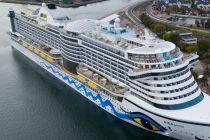
AIDA Cruises trials 100% renewable bio marine fuel on AIDAprima
On September 5th, AIDA Cruises refueled its ship AIDAprima at Port Rotterdam (Netherlands) using 100% renewable Bio Marine Fuel (BMF100), marking the...
September 9, 2024 - Cruise Industry

Rotterdam Port set to launch shore power supply at Holland America Quay by late 2024
The installation of shore power supply (OPS) at Rotterdam’s Holland America quay is scheduled for completion by the end of the 4th quarter of...
July 30, 2024 - Cruise Industry
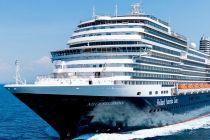
HAL-Holland America schedules 3 Solar Eclipse cruises for 2026
HAL-Holland America Line has announced three itineraries for the 2026 total solar eclipse, ensuring passengers can witness this celestial event...
July 28, 2024 - Cruise Industry
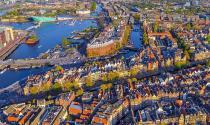
New agreement reduces cruise ship visits at Port Amsterdam from 2026
Amsterdam (Netherlands) has reached an agreement to begin limiting the number of cruise ship calls at its seaport starting in 2026. This is part of a...
June 29, 2024 - Cruise Industry
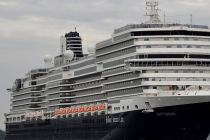
HAL-Holland America's ship MS Rotterdam tests biofuel for reduced emissions
HAL-Holland America Line has initiated a long-term biofuel trial on its flagship, ms Rotterdam, employing 100% low carbon intensity biofuel while...
May 13, 2024 - Cruise Industry

Cruise Port Rotterdam celebrates 2.5 millionth passenger with P&O UK's ship Iona
Cruise Port Rotterdam achieved a significant milestone on April 3, 2024, as it welcomed its 2.5 millionth cruise passenger. The noteworthy event...
April 4, 2024 - Cruise Industry
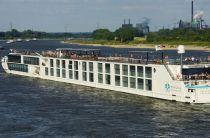
Alle Pierce christens Riverside Debussy, marking inaugural voyage
Renowned TV Host, Producer, and Travel Expert, Alle Pierce, officiated the christening ceremony of Riverside Debussy on Wednesday (March 13) in...
March 16, 2024 - Cruise Industry
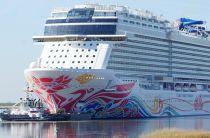
Norwegian Joy's refurbishment details/changes unveiled (SPA, Suites, Beach Club)
NCL-Norwegian Cruise Line has unveiled a series of enhancements aboard the Norwegian Joy following a 3-week drydock refurbishment project. Among the...
March 6, 2024 - Cruise Industry
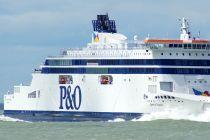
P&O Ferries UK achieves 50,000-ton CO2 emission reduction milestone
P&O Ferries, a prominent maritime transport service provider, has significantly reduced its CO2 emissions by ~50,000 tonnes over the past year...
March 2, 2024 - Cruise Industry

NCL's ship Norwegian Joy completes a drydock refurbishment in Rotterdam
The NCL-Norwegian Cruise Line ship Norwegian Joy has concluded a 3-week dry dock at Damen Shiprepair Rotterdam/Holland, unveiling new...
February 14, 2024 - show more news
